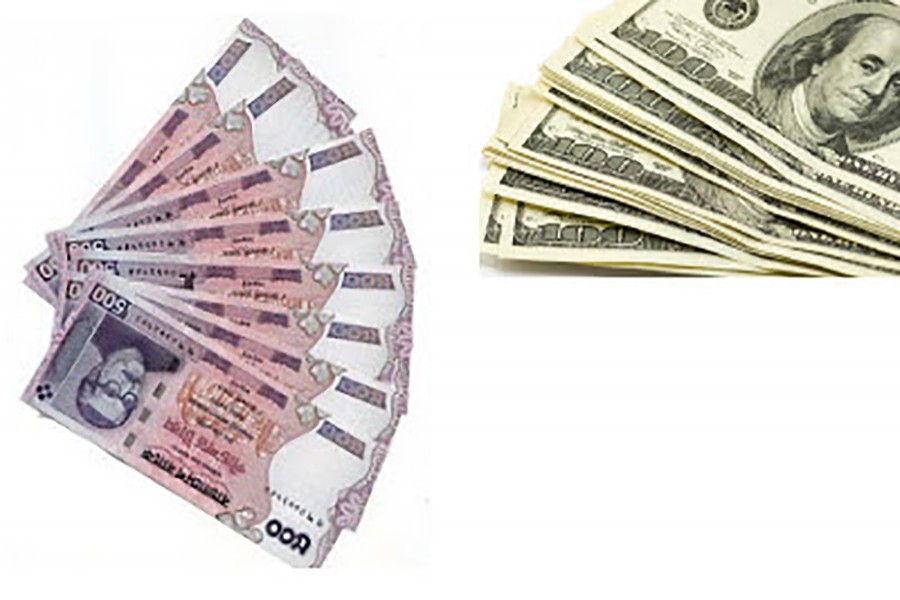The ministry of finance (MoF) foresees the necessity of depreciating taka further if Bangladesh's external financial imbalance intensifies in the second half of this fiscal year, officials said. Taka depreciated by 5.0 per cent against greenback in 2017.
The worries crop up as the ministry of finance (MoF) marks several macroeconomic risk factors for the current fiscal year (FY). Unsatisfactory revenue collection, slower budget implementation, external imbalances, growing non-performing loans, and high inflation are on the flip side of the economy, they added.
"Resumption of export demand and a rebound of remittance inflows are expected to moderate the current-account deficit. However, if the current trend continues, external imbalance is likely to be intense, and may lead to local-currency depreciation," the MoF says in preparing an answer to a questionnaire forwarded by the International Monetary Fund (IMF).
In the meantime, the BDT has been depreciating against the US dollar during the last couple of months. The inter-bank rate of the dollar was Tk 82.96 Tuesday while for import payment it was quoted Tk 83.50.
During the July-December period of FY 2017-18, import experienced 25.78 percent rise while export saw a moderate 7.15 per cent growth, thus widening the trade deficit.
It has resulted in the rise of current-account deficit to US$4.76 billion from a small deficit of $0.54 billion in the corresponding period of the previous fiscal.
The MoF says the revenue-earning target for FY 18 is Tk 2879.90 billion of which only Tk 882 billion could be mobilized up to December last. The collection is 30.62 per cent of annual target and thus the growth is not satisfactory.
In its comment on budget-implementation scenario the MoF says the size of the current fiscal's budget is Tk 4002.67 billion of which only Tk 944.98 billion was spent during July-December period.
The rate of expenditure in the first half is significantly lower in relation to the government-targeted spending this fiscal year, the ministry stated in the reply to the IMF query.
"Although it is expected that budget implementation will accelerate in the remaining period of the fiscal year, however, the present trend in implementation may require downsizing of the present budget," it noted.
The finance ministry also observes that higher food inflation in the July-December period increases the risk of second-round effects on non-food inflation for the remaining months of the fiscal year.
The rise in global oil prices would also cast impact on country's price levels, it noted while listing macroeconomic risk factors.
In December last, the point-to-point food inflation climbed up to 7.1 per cent.
The MoF also listed non-performing loans (NPLs) in banks as another major financial- sector risk.
At the end of September last, the NPL ratio stood at 10.7 per cent from 9.2 per cent as of December 2016. The increase in NPL in the state-owned commercial banks to 29.3 per cent at the end of September 2017 from 25.1 per cent at the end of December 2016 raised the gross NLP ratio, it says.
An IMF Article IV mission is now in Dhaka on a visit for a reappraisal of the state of Bangladesh's fiscal sector, real sector, and monetary and financial sector.
The delegation from the Washington-based multilateral funding agency will assess economic and financial developments and discuss the country's economic and financial policies with government and central bank authorities.


